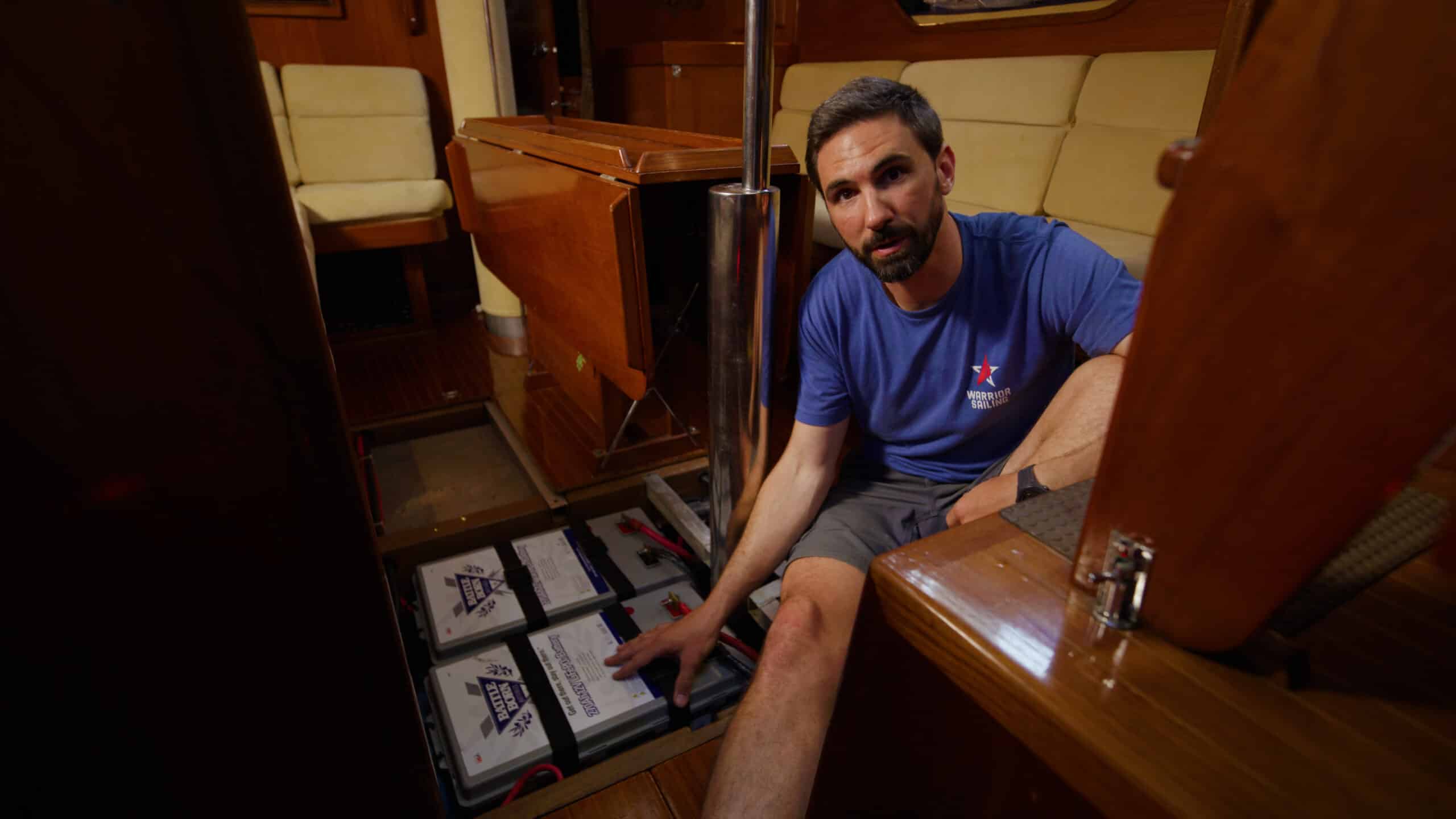
While installing a marine electrical system or dealing with electricity in general, it is essential to prioritize safety. Although a very useful and necessary part of everyday life, electricity is extremely powerful and can be extremely dangerous if handled improperly. To ensure your physical safety as well as the safety of your boat and electronics, follow these essential instructions to stay safe when working with AC and DC currents.
When dealing with AC current, typically from shore power or another high-voltage device within your system, you want to protect yourself from electrocution. Since shore power comes into your boat at 120V, it can easily shock you, which can be harmful and potentially deadly. To ensure you won’t encounter this high voltage, make sure your devices and wires are de-energized before working with them.
Although DC current remains at a much lower voltage that is incapable of electrocuting you, it can still cause damage and create dangerous situations if handled incorrectly. If your batteries or cables that carry DC current encounter a short, an immense amount of heat can quickly build within them that can easily melt something or catch things on fire. This can damage many of your electrical components and create an incredibly dangerous situation. To prevent these situations from arising, you need to protect both your battery terminals and cables.

While you can touch your battery terminals without risking any harm, if a piece of metal encounters them a short can occur. A short happens when any part of the circuit is cut off prematurely, leaving the excess current with nowhere to go. If you’re working on your system, any metal tool or object that falls onto your battery terminals can cause a short that quickly causes an immense amount of heat to build up. This heat is powerful enough to liquefy whatever tool fell onto the batteries and potentially start a fire.
An easy way to protect your batteries and keep your system safe is to ensure that your terminals remain covered. Simply placing a cover over each of your battery terminals can ensure that even if a metal tool or object falls onto them, it can’t interrupt the circuit, and a short cannot occur.
Since the batteries in your system carry such a low voltage, the amount of current running through the cables in your system remains high. The larger the cables are in your system, the more current they carry, making them more dangerous in the event of a system short. Shorts can occur when your positive and negative cables coming off your batteries chafe together or cross over each other. This will limit the path of the current, leaving the excess current without anywhere to go, causing an immense amount of heat to build up, which could cause catastrophic damage.
To protect your cables from short, you will want to ensure they are installed in a manner that is free from danger, limiting the potential for chafing or crossing. Additionally, you will want to install them immediately close to a fuse. According to ABYC recommendations, a Class T Fuse, a cable interrupting up to 20,000 amps of power, should be installed within 7 inches of your battery bank. With this fuse in place, in the event of any short to your circuit, the fuse would pop, causing the excess power to separate before it becomes dangerous.
Check out the full Marine 101 series on our YouTube channel or through the Academy page on our website. If you have further questions or need help designing the perfect marine power system, our technical sales team would love to help! You can reach them by calling (855) 292-2831 or emailing [email protected].
Shop Best Sellers
Ask a technical specialist now at 855.292.2831
Stay in the Know
Copyright © 2024 Dragonfly Energy. All rights reserved. Dragonfly Energy collects personal information for its internal use. We do not share customer information with any third parties.